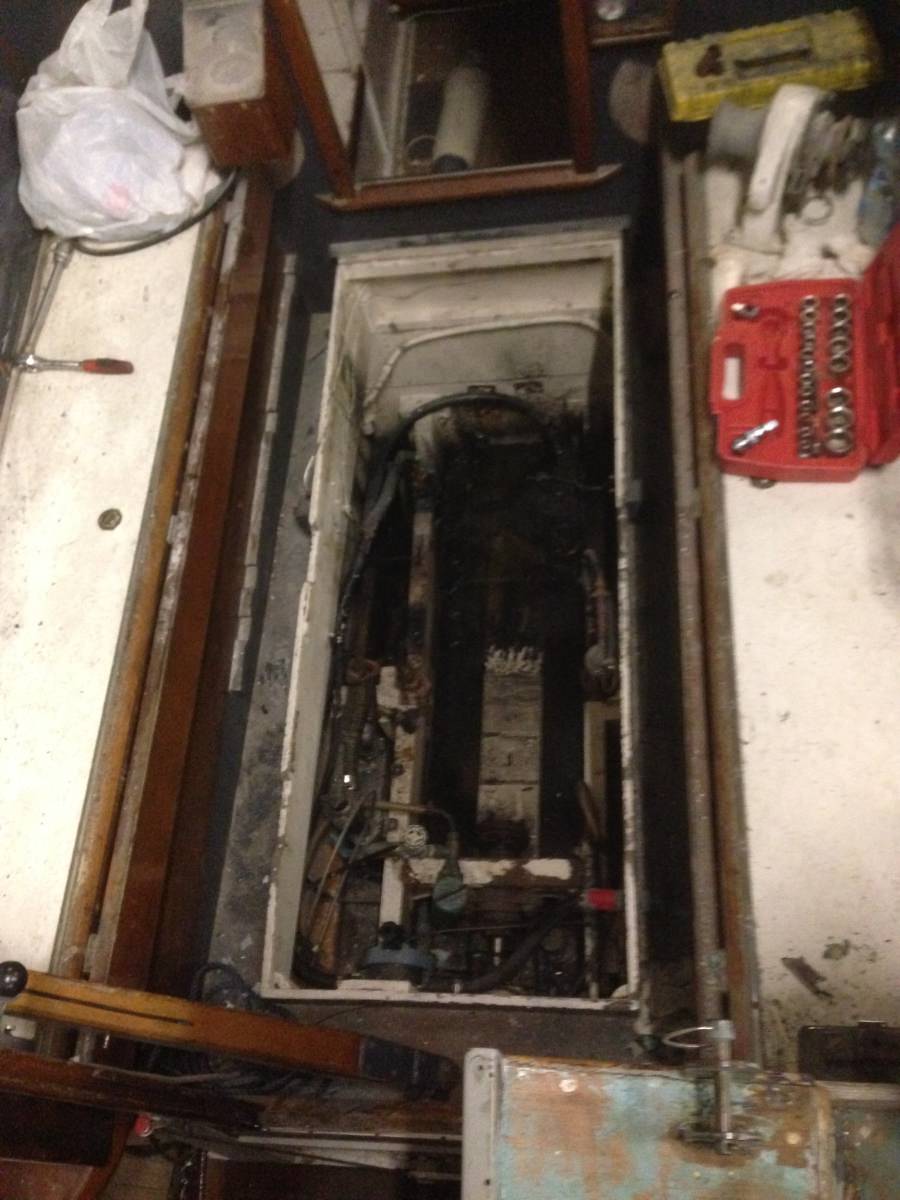So, having a forklift definitely helps this process, especially with the weight of a Perkins 4-107 with hydraulic gearbox.
And, the excellent design of the Atalanta meaning the engine lifts out vertically!
I’m heading down to Marine enterprises in Dorset, to see if I can source something less oily perhaps – here’s what the engine bay now looks like:
Next, all the window frames need stripping back – but I can say that we have reached the point of all items to be removed – have been removed.
From here on in, it’s making new woodwork, fixing some holes, and an awful lot of painting and varnishing. Plus the engine, the wiring, rigging, bunks………etc…..



Hi Nick, I think we might just make it this year! It does help having some willing helpers, especially Mike who is a furniture stripper/restorer by trade, but did his apprenticeship on boats… if I was doing it all myself I reckon I’d still be stripping the coach roof! Really looking forward to getting back out on the water.
Nick – looking good. Impressed you are finding the time amongst your growing family 😉
Making me feel quite ashamed about my own lack of progress.
All the best and looking forward to introducing Zambra to Helene at Mersea………
The boxes in the 26 form the cockpit drainage. Most are covered with open wooden grid to prevent large objects falling through but allowing water to drain
They are closed, but this is an A-31 so there are quite a few different bits. Even so, the engine 4-107 is a bit of an overkill – both is size and power, and especially oily-ness.
would the 4.107 have been a large engine both physically and in HP for the atalanta?
also i am trying to see from your pictures, are your keel box’s closed on each side of the engine bay, mine are open, and it goes against my grain to leave them open !!
mick byrne
Cyn A144